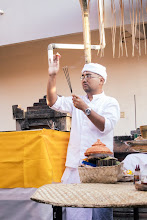 Nikon Europe introduced a brand-new flagship Speedlight - the Nikon SB-900 – that offers exceptional high-speed, high-power operation combined with an extended zoom range. The SB-900 incorporates a moving diffuser and light source that can zoom from 17mm to 200mm in just 1.2 seconds while maintaining an even light distribution. The versatile new flash provides a choice of three illumination patterns (centre-weighted/standard/even) that can be selected to suit a particular subject.
Nikon Europe introduced a brand-new flagship Speedlight - the Nikon SB-900 – that offers exceptional high-speed, high-power operation combined with an extended zoom range. The SB-900 incorporates a moving diffuser and light source that can zoom from 17mm to 200mm in just 1.2 seconds while maintaining an even light distribution. The versatile new flash provides a choice of three illumination patterns (centre-weighted/standard/even) that can be selected to suit a particular subject.
“Nikon Speedlights are widely regarded to be the best in the business” said Robert Cristina, Manager Professional Products and NPS, Nikon Europe. “The new SB-900 propels flash lighting into the future with really exciting creative opportunities available at the touch of a button” he added.
The SB-900 is perfectly adapted to both DX and FX formats, and will automatically select the appropriate light distribution pattern according to the sensor format of the camera to which it is attached. The SB-900 also automatically detects the fitting of fluorescent or incandescent colour filters, instructing the camera to switch to the appropriate white balance setting. Designed for today’s high speed digital image capture, the SB-900 handles repeated firing at high power with an improved booster circuit for high-speed recycling and includes a built-in thermal sensing system that protects the unit against overheating.
It is fully compatible with the other Speedlights and accessories of the acclaimed Nikon Creative Lighting System and can be easily incorporated into multiple-flash lighting set-ups. Bounce flash capability is provided through a head that can be tilted up by 90º and down by 11º and rotated horizontally through 180º, making the SB-900 an essential accessory that opens up many creative opportunities to the photographer.
The SB-900 will be available as of 25th July 2008.
- Multi-step auto zoom covers wide 17-200mm zoom range (24-105mm:SB-800)
- Three illumination patterns (standard, center-weighted and even) are available to match each shooting environment
- Automatically detects Nikon FX and Nikon DX formats and selects suitable light distribution
- Improved booster circuit for high-speed recycle time: Recycle time using four AA-size batteries is almost equal to the SB-800 with five AA-size batteries
- New AF-Assist illumination covers a wide 20-105 mm focal range compatible with the new Multi-CAM3500 FX/DX AF sensor
- Firmware update via Nikon D3 and D700 is possible (world’s first*)
- Thermal Cut-out function limits the number of flashes to avoid deterioration of light emitting parts caused by continuous flash firing
- Automatically detects color filters (fluorescent or incandescent), enabling camera to control color temperature according to filter information from SB-900
- Improved switch panel for enhanced usability
- Improved GUI using a large-size LCD dot panel
- Bounce capability: tilts up to 90º, down to -7º, rotates horizontally 180º to right and left
- Advanced Wireless Lighting and versatile functions for up to three remote groups of SB-900s or other compatible Speedlight controlled through the master SB-900

 RSS Feed (xml)
RSS Feed (xml)




